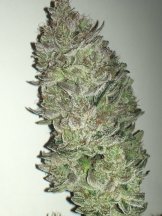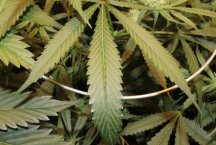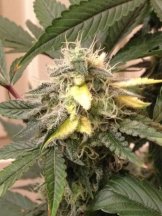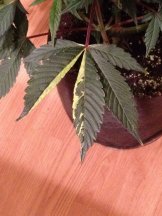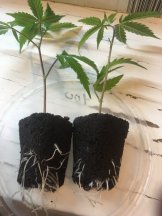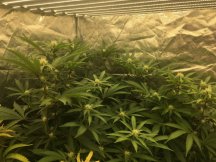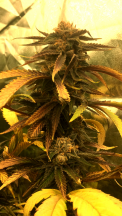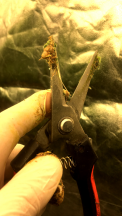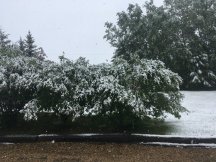The double serration of leaves can be a trait that affects every leaf margin or just a few, seemingly without an observable pattern. The Chem D does express the intermittent double serration. Here is a side by side of a Chem D leaf and a Chem D hybrid expressing the double serration (Blue line) (
along with a couple other traits):
The double serrated leaf trait is most closely associated with Exodus Cheese and Skunks more generally (
Exodus Cheese is a pheno of Skunk#1). My Green Crack S1 expresses the double serration, presumably owing to Skunk#1 parentage:
It is thought that this trait originated from either Himalayan or Afghani landrace plants. Breaking down the parentage of the
Skunk =
Afghani x Mexican x Columbian, we see the Afghani presence. This may hint at the origin of the Skunk's double serration, but it's speculation.
The Chem D's propensity to express the double serration could be considered further evidence that the Afghani has a bigger role than just "Skunk". While we don't know exactly what Chemdog is the result of, Skunk VA (
the guy who held Chem'91) is adamant he sees Afghani in the Chemdogs.
Considering our current gene pool has been "folded over" on itself and hybridized to death, I have had non-Skunk plants express this trait. Unfortunately, doubly serrate leaves are not a guarantee of exceptional chemotypes and mostly serves as a visual affect. If you are breeding with a plant that has this trait, it can be used as a genetic marker for dominance in progeny. I'm currently working a project with the Green Crack S1 pictured above and I am using the serration as a way to spot GC dom progeny early.
Whether the trait is good or bad will be sussed out when you do final smoke testing. If you find your particular doubly serrate pheno checks all of your boxes, then it could be said that in that instance (
and any subsequent progeny you make with it) the trait is good. Ultimately, it is as relevant as any other observable trait in the absence of further information.



